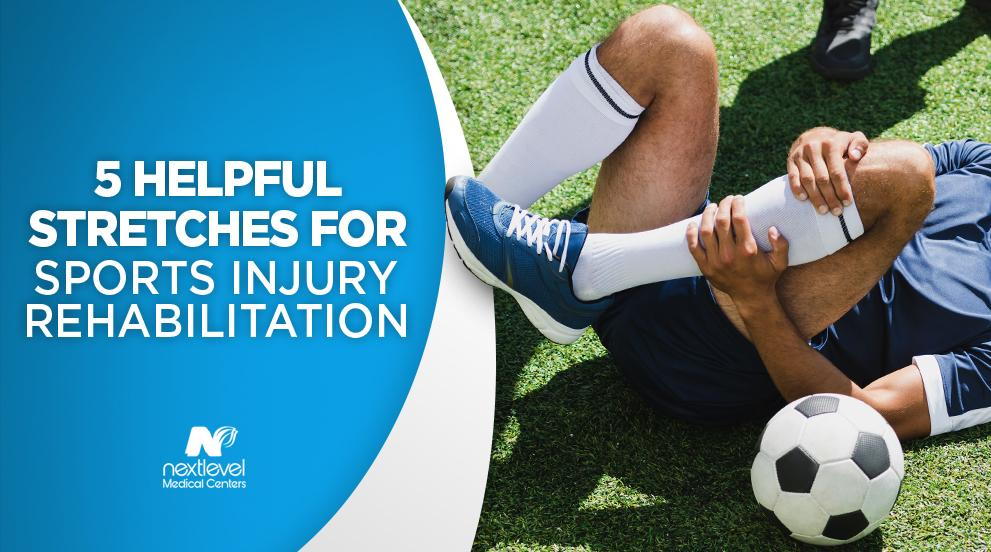
When you live the life of an athlete, it is expected that you will wind up injured to some capacity. Unfortunately, sports injuries are an extremely common occurrence that can make life somewhat miserable. Sports injuries can make functioning nearly impossible depending on how severely you were hurt, which in turn requires treatment to be sought to minimize the long-term effects. Rehabilitation is common practice to help build your strength back up and return your body to the level of strength it once knew.
Rehabilitation often involves many exercises and stretches that can help repair your body. Of course, some exercises will be more effective than others, and sometimes you will need more rigorous treatment. However, with this article, we hope to provide some guidance and insight into five of the more helpful stretches that can rehabilitate your body following an injury.
#1: Start With Static Stretches
First of all, we would like to clarify that no single stretch is a miracle tool for rehabilitation of a sports injury. However, understanding the distinct types of stretches that can be employed can be an excellent way of building a recovery regimen. The first step to consider is that immediately after beginning your recovery regimen, the goal is to take things as easy as possible while getting in all the exercises you need. Static exercises can be an ideal starting point for the beginning of your rehabilitation following the injury.
Static stretching focuses on extending the muscles while they are under tension. This serves to relax the muscles and allow the blood to flow. It is important never to exert the afflicted muscle to the point of pain. If you feel pain in the injured area while performing static stretches, that is the cue to stop. Otherwise, you risk worsening the injuries you have sustained.
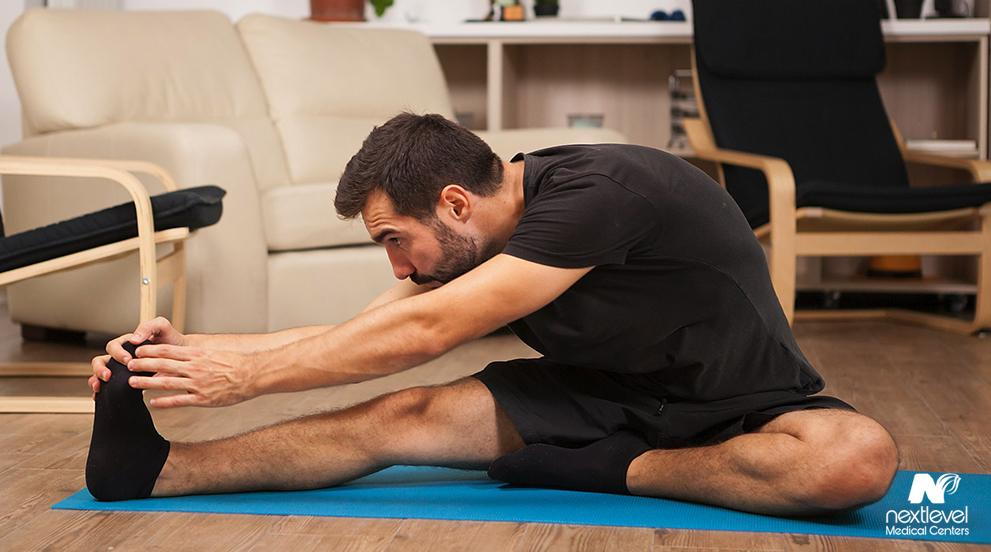
Static stretches can be used to help improve and restore the range of motion in a wounded limb. When healthy, they have been known to improve the muscles' flexibility. For a wounded limb, this effect can be used to restore flexibility thought lost to the injury as you allow it to rest. However, the real benefit of static stretches lies more in the power it has to promote blood flow.
In 2018, research found that static stretches improved the body's circulation around the area. Blood circulation promotes your body's ability to heal itself and is an important part of regaining full range with a body part. In addition, by improving the flow of blood through the afflicted limb or area, you enable your body to begin working on lowering the level of pain and stiffness you might be suffering. Static stretching is well known to be a leading tool in loosening the muscles enough to free up the flow of blood, which in turn causes the pain to diminish to a certain extent.
#2: Passive Stretching Should Be Used As Well
Another early stretching form that can be used is passive stretching. Passive stretching is remarkably similar to static stretching because there is only one difference. With passive stretching, you employ a tool or accessory to complete the stretch. Passive stretching involves letting the aforementioned accessory provide the tension for your body rather than actively tensing yourself up. Hence the term "passive."
Passive stretching can even be done by recruiting a friend or family member to maintain the tension instead of an inanimate object. The point is it provides similar effects to static stretching with the help of a tool. Given that passive stretching is just static stretching with extra equipment, the benefits it has to offer to your rehabilitation are essentially the same as you would see with static exercises. Specifically, it offers the same improvements to the range of motion, flexibility, and mobility that static stretching has to offer.
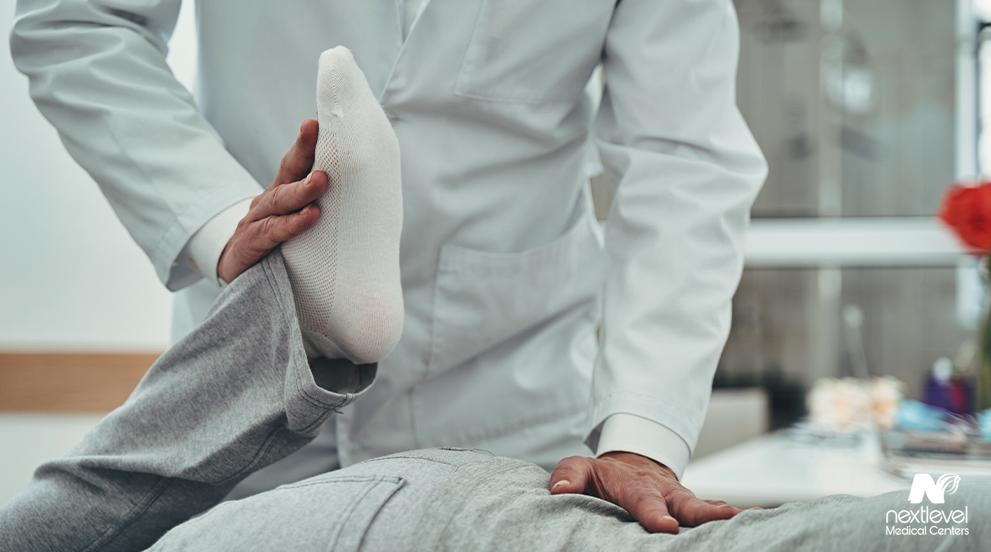
The same animal study that we referenced is applicable here. The use of passive stretches promotes the flow of blood and, consequently, the body's healing process. It also means that you need to exercise the same level of caution and listen to your pain responses, just like with static stretches. However, some additional research corroborates the benefits of passive stretching. In 2013, a study found that passive stretching for short periods resulted in additional muscle growth.
For a rehabilitation regimen, muscle growth is an essential step since it offers your body an opportunity to reinforce itself against this type of injury in the future. The more muscle you can grow around the afflicted area, the less likely you will sustain the same type of injury since there is more there to support it. While we realize that using passive stretches in tandem with static stretches might seem redundant, the truth is that it offers you a way to continue improving without exerting as much effort.
#3: Employ the Use of Proprioceptive Neuromuscular Facilitation
Proprioceptive neuromuscular facilitation (PNF) is a form of stretching that is a little more intense and tends to require supervision. For the best and safest results, you should engage in PNF stretches under the supervision of your physical therapist rather than alone. This is because PNF stretches are actually very intensive and force you to use your natural reflexes to perform the actions. Relying so heavily on your natural reflexes while recovering from an injury is what makes these kinds of stretches risky enough to warrant observation from a caregiver.
The goal of PNF stretches is to allow your muscles to relax on the deepest level through natural reflexes. Doing so allows your muscles to stretch to their limit, promoting improved flexibility and range of motion. You do this while another person provides resistance against the muscles in a manner not overly dissimilar to the tools employed in passive stretching.
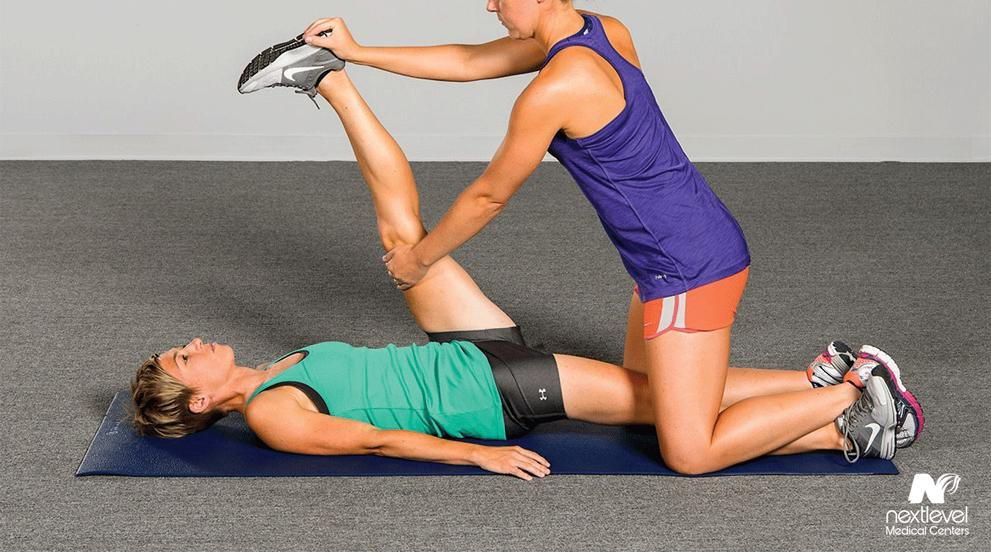
PNF can be beneficial for the rehabilitation of injuries because it can be used to target specific groups of our muscles. In fact, PNF was originally developed to serve as a rehabilitation exercise rather than a general type of stretching. That said, you should certainly wait until you have recovered somewhat before attempting PNF for your rehabilitation. Given the intensity and risk factors associated with PNF, using it for your regimen too early can exacerbate the issue rather than mitigate it.
#4: Dynamic Stretches Can Be Used to Rebuild Strength
Once you have recovered to the point that you have recovered general use of the body part you hurt, it becomes a matter of building up strength. To this end, your focus should be on taking advantage of a more active form of stretching explicitly designed to build up muscle and reinforce your body against future damage. We previously discussed how passive stretching could promote muscle growth; however, a far more effective type of stretching works more efficiently for long-term recovery.
We are, of course, referring to dynamic stretching. Unlike the previous types of stretching where you primarily remain stationary, dynamic stretching involves actively mimicking movements you would perform in sports or workouts. Instead of holding a stretch, your goal is to get the body moving and build up muscle as you go. Often, dynamic stretches employ objects around you to aid you or an outside force for you to resist. That said, using dynamic stretches when recovering from an injury is not something to be done lightly.
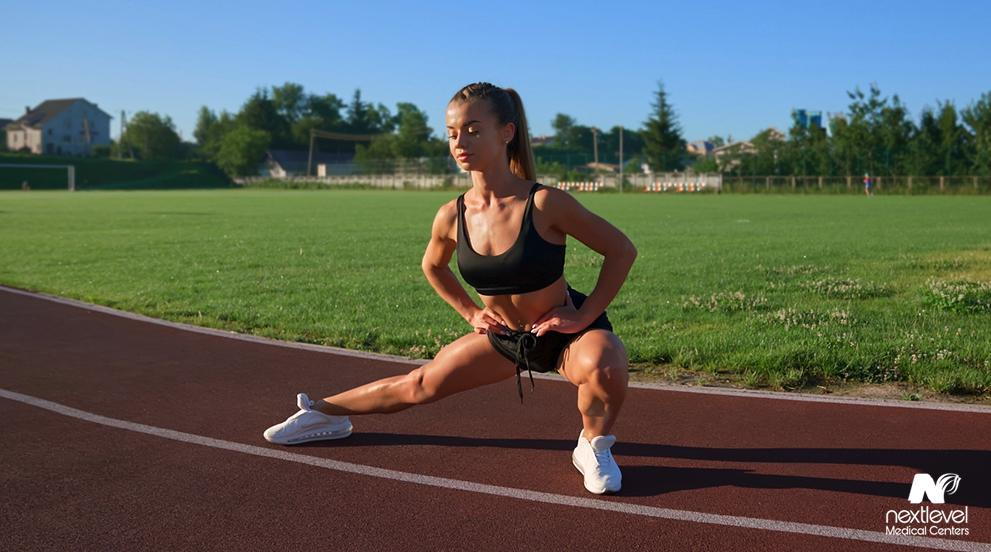
The fact is a dynamic stretch should never be performed when you are suffering from an injury unless you are instructed to do so by a physical therapist or physician. Because of the level of activity involved in a dynamic stretch, attempting one while injured could make the situation that much worse. Traditionally, these stretches are employed as a warm-up before more intensive exercise. This is why they are a late-stage step in a rehabilitation regimen, as they are designed to get you back into shape rather than ease you out of an injury.
#5: Active Stretches Can Be Used to Restore Flexibility
Building up muscle to reinforce your healing limb is essential in rehabilitation, but there is more to it. You also need to restore your leg's flexibility so it can be used for all the same actions and activities you previously enjoyed before the injury. While some of the earlier stretches can be very useful toward restoring flexibility, active stretching is somewhat similar to dynamic stretching, with a few key differences that prime it as a method for restoring flexibility rather than building muscle.
Active stretching involves contracting an agonist muscle in a way that opposes an antagonist muscle without making use of external forces. Essentially, you use one muscle to provide resistance against the other. This is done with minimal or no movement, earning static stretching the alternate name of static active stretching. Traditionally, active stretches are performed after exercising rather than as a warm-up. However, they can be effectively repurposed for your rehabilitation regimen with minimal concern. One caveat is that it must serve as a late-stage step of your rehabilitation, like dynamic stretching.
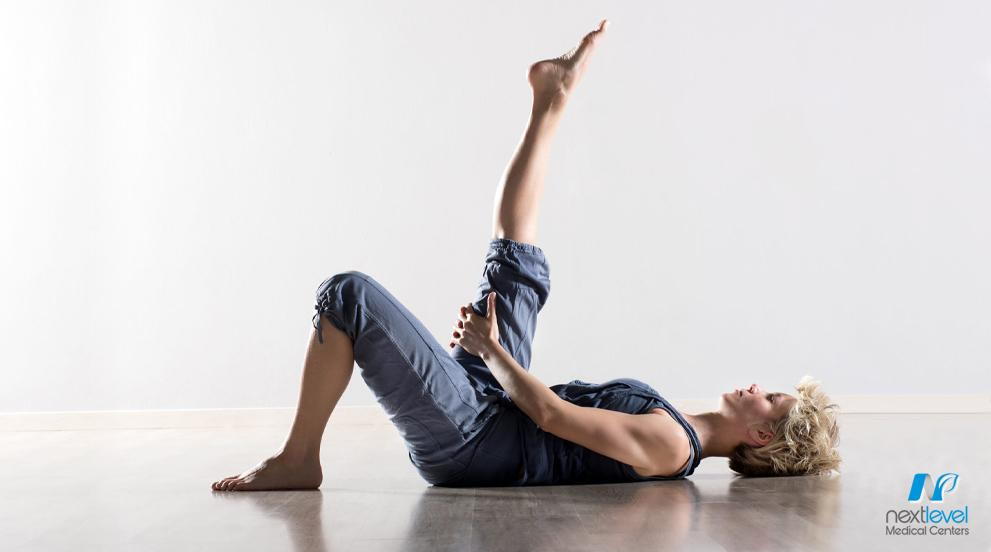
Active stretching is somewhat simple to perform but can take a fair amount of practice to perfect. It is fairly similar to standard yoga practices, and they can be performed virtually anywhere, though you might want to consider supervision if you are using it for rehabilitation. To start, however, you will want to:
Isolate the muscle you are attempting to rehabilitate and then identify a stretch pose that will allow you to exercise that specific muscle.
The muscle you are rehabilitating is then stretched against the muscle opposite to it by flexing it.
Ideally, the pose is to be held for approximately 10 seconds until the muscle you tend to begins to exhibit the physical sensation associated with stretching.
As we said, active stretching is part of the long-term recovery from your injury. You will likely have suffered diminished flexibility and function of the area that was hurt. Active stretching is the step that will aid in the recovery of those functions. Following the above instructions should get you started on active stretching, but you need to take care not to push yourself too soon into the rehabilitation process.
Take Your Health to the Next Level
Sports injuries are a common issue for athletes across the globe and can be debilitating to your physical state. Unfortunately, all sorts of injuries can afflict athletes, but fortunately, there are plenty of avenues for rehabilitation following an injury. Many of the stretching types we have outlined in this article, while viable for pre-exercise, are effective for restoring the range of functionality you might have lost as a result of your injury. However, we also know that some of these types of stretches will require professional supervision to ensure that you do not exacerbate the injury itself. Fortunately, that is something we might be able to help achieve.
We at Next Level Health understand the importance of taking care of your body and recovering from the injuries you have sustained. That is why we have worked tirelessly to create physical therapy courses and treatment options to help you recover. Given that some of these stretches are best performed under the supervision of physical therapists, we can offer that supervision and the resources needed to perform them successfully.
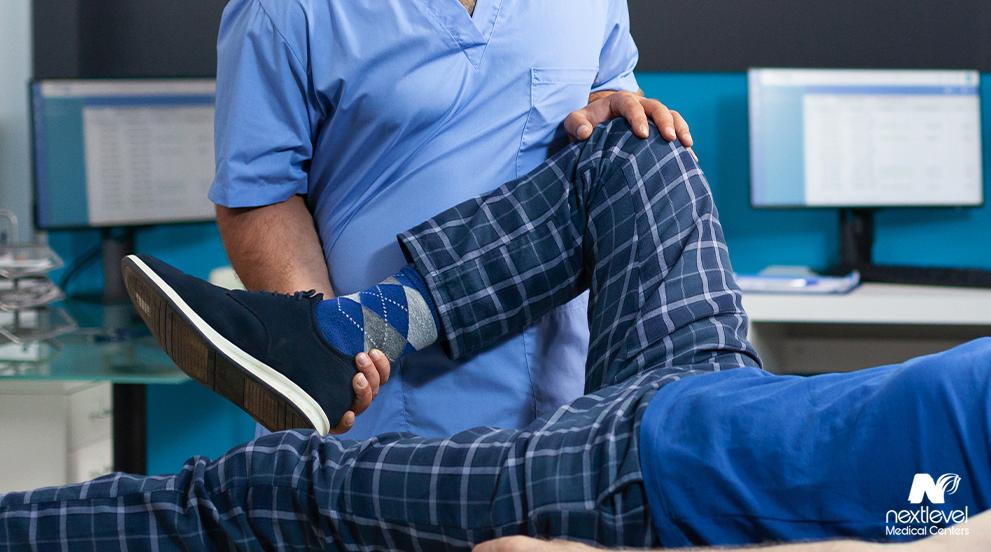
In addition, with regimens coming from the minds of physicians like Dr. Emmett Blahnik, we can offer you a wide array of treatments that you might not be able to find elsewhere. We even provide more direct intervention for more intensive rehabilitation needs. So, contact us today to take your health to the Next Level.
Do you or a loved one have any questions about these various stretches we've listed, the services we can provide here at Next Level Health, or anything similar? If so, please feel free to reach out and contact us at any time! We understand that the recovery process from a sports injury is a serious one, and we would be more than happy to assist you in getting through that process however we possibly can! We're ready to help at a moment's notice.